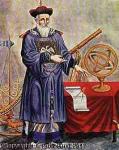Giuseppe Castiglione
Giuseppe Castiglione
Place: Milan
Born: 1688
Death: 1766
Biography:
In the realm of art, few names shine as brightly as Giuseppe Castiglione, an Italian painter who left an indelible mark on the world. Born in 1688 and passing away in 1766, this Jesuit lay brother not only mastered the art of painting but also became a missionary in China, serving at the imperial court of three Qing emperors.
Early Life and Training
Castiglione's journey began in Milan, where he was educated with a private tutor and learned to paint under the guidance of a master. In 1707, he entered the Society of Jesus in Genoa, aged 19, although he never became a priest, instead joining as a lay brother. This early training laid the foundation for his future artistic endeavors.
Artistic Career
Castiglione's style is characterized by a unique blend of European and Chinese traditions. His earliest surviving painting, created in 1723 during the first year of Yongzheng's reign, marked the beginning of his adaptation to Chinese themes and taste. He was favored by the Qianlong Emperor, serving him for three decades and granted increasingly higher official ranks within the Qing court.
- Castiglione painted various subjects, including portraits of the emperor and empress.
- He created a series of "Battle Copper Prints" commissioned by the Emperor to commemorate his military campaigns.
- His work was not limited to painting; he also designed the Western-Style Palaces in the imperial gardens of the Old Summer Palace.
Notable Works and Legacy
Castiglione's most important early work is One Hundred Horses in a Landscape, painted in 1728 for the Yongzheng emperor. This painting, executed using tempera on silk, showcases his mastery of European-style perspective and consistent light source. The dramatic chiaroscuro shading typical of Baroque paintings is reduced, with only traces of shadow under the hooves of the horses. Key aspects of Castiglione's work include: * His unique blend of European and Chinese styles. * The use of silk as a medium, which required careful and precise painting due to the impossibility of removing brushwork on silk. * The importance of his preparatory drawings on paper before tracing the design onto silk. For more information on Giuseppe Castiglione's work and the art movement he was part of, visit Giuseppe Castiglione or check out the Wikipedia page on Old Summer Palace. To learn more about other artists and their contributions to the world of art, explore the Wikioo.org website, which offers a wealth of information on various art movements and styles.
Wikipedia link: Click Here





